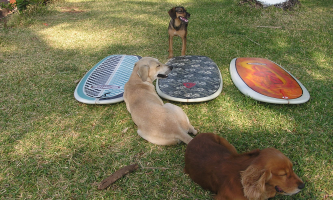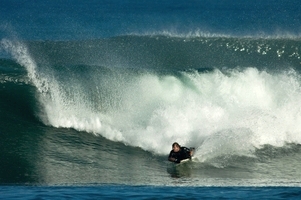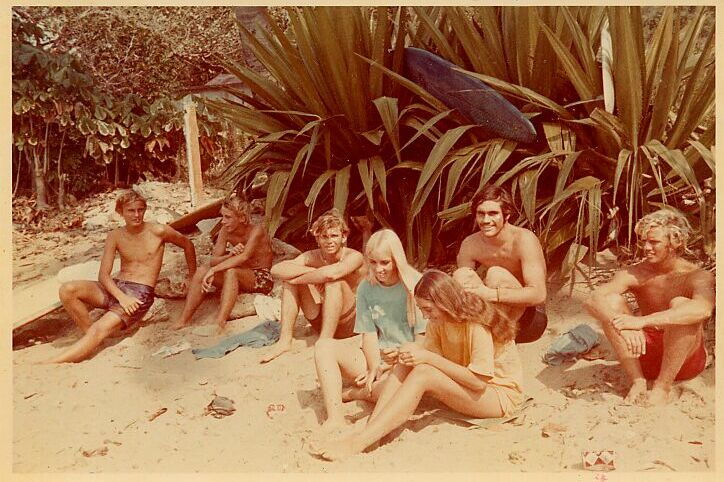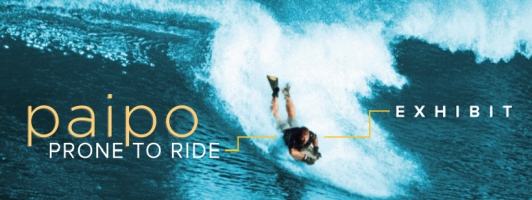MyPaipoBoards.org
Table of Contents (early draft placeholder)
|
|||||||||||||||||||||
|
Paipo Research Project Research questions include:
|
|||||||||||||||||||||
|
In the Beginning... Our Story (in process) The initial MyPaipoBoards website started off as most internet sites did a long time ago: a hugely amateurish loosely structured mash-up of Internet hyperlinks; copies of personal stories and testimonials harvested from internet searches; images combed from Internet searches, that I owned or were given to me; and, and the goal of sharing information for and between like-minded paipo aficionados. Over the years the website modernized somewhat, data continued flowing in, communications forums were added and later modernized, and an Internet rich in paipo surfing content exploded worldwide. Long gone are the Google searches that yielded less than fifty "hits" and very few images. Some milestones in the evolution in MyPaipoBoards.org follows:
Also instrumental in nurturing the paipo pages in the early days were Nels Norene and Poobah, and alt.surfing's El Roca, who provided early days paipo-related excerpts from 1960s-era surfing magazines. Charlie Daley, a schoolmate of mine from the 1960s, in Santurce, Puerto Rico, also loaned me some 40+ issues of surfing magazines for sourcing quality scanned images in support of the Aviones Boys Puerto Rican surfing history project and these same magazines provided a jump start in documenting paipo surfing in the magazine media. And, for the past eight years, Bob Green has been my tireless and patient partner in the Paipo Research Project, interviewing scores of paipo surfers, and suggesting new avenues to research and share our findings. Rod Rodgers December 2016 |
|||||||||||||||||||||
|
Acknowledgments, Sources, Places, Citations, Contributors... HI Surf Advisory -- Neal
"Sponge"
Miyake, author, creator, freelance photographer and writer,
consummate
contributor to the alt.surfing newsgroup, husband and father, and a
stoked
resident of Oahu, Hawaii. Much credit goes to Neal for encouraging me
to create the MyPaipoBoards website in January 2000. Legendary Surfers, Malcolm Gault-Williams, historian, researcher, and publisher of surfing's culture & legendary surfers including numerous oral interviews, providing the most detailed information about surfing's history, ancient to modern times, over the internet free press. Pods for Primates: A Catalogue of Surfboards in Australia Since 1900 (www.surfresearch.com.au). Geoff Cater's Pods for Primates is a free online annotated surfcraft museum. In particular, see the paipo* catalogue : text and the paipo* catalogue : images. For reference citation codes, see "pods for primates: references." There is much, much more so take some time and explore. el_roca, active alt.surfing participant; contributor of scanned articles/adds from old back issues of the surfing press Bob Green (Australia), my principal collaborator the past years on the Paipo Research Project, in particular the extensive work he has done on the Paipo Interviews, from identifying people to interview, doing the background research in preparation for the interview, conducting the interview via phone, email, letter writing, and in-person, compiling the interview, edit, review... a lot goes into the process! Many thanks, Bob. John R. K. Clark, author of several Hawaiian Islands beach books and the outstanding reference book, Hawaiian Surfing: Traditions From the Past (2011), contributor to the Paipo Research Project, and the person who has best answered the question, "What is the origination of the word paipo?" Surfing Heritage & Culture Center (formerly the Surfing Heritage Foundation), for their cooperation and support in providing special access to their collection of surf-related magazines and periodicals, books and access to their artifacts and facilities. Florida Surf Museum (formerly the Cocoa Beach Surf Museum), for their cooperation and support in providing special access to their collection of surf-related magazines and books, and site of the Paipo Exhibit in 2014, curated by Rod Rodgers, MyPaipoBoards.org. Huntington Beach International Surfing Museum, for their cooperation and support in providing special access to their collection of surf-related magazines and books. San Diego State University, Surfing Collection, Special Collections and University Archives, for their cooperation and support in providing special access to their collection of surf-related magazines and books. Surfer Magazine and Surfing Magazine, long-time publishers of surfing items and source for several scanned articles and advertisements with pics and descriptions of paipos. And, The Surfer's Path, a more recent surfing magazine of U.K. origin that carries this torch in addition to regularly publishing several fine feature articles. The Surfer's Journal, the source for information on a wide range of topics related to the culture, history, and art of surfing. Making of America (MOA) on-line digital collections, at Cornell University and University of Michigan. Google Books. My local library, Baltimore County Public Library, in providing access to so many books through the Inter Library Loan program (in addition to being my first internet service and hosting provider). WorldCat, the world's largest library catalog. WorldCat also provides a means for managing my research bibliography and citations. EasyBib for easily generating reference citations and providing a special account for assisting citation management. The members of the MyPaipoBoards Forums who have collectively expanded the knowledge, understanding and enjoyment of paipo boarding. And to all the Paipo Interviewees that have made contributions, small and large, and to those unnamed paipo surfers who inspired them. To the many others who have helped researching the literature at "special collections" sites, worked on the Paipo Interviews, stimulated discussion and made many other contributions, including but not limited to: Kim Green (Santa Cruz); Joe Tabler (surfbooks.com); Matt Warshaw (database research); Charlie Daley; Tom Duncan (scanner, lodging and moral support!), Jeff and Jill Quam (stoke and lodging sponsorship!); Cher Pendarvis (San Diego); and, Steve Wilkings (photo editor at the Surfing Heritage and Culture Center and Steve Wilkings Photography). To all the authors and sponsors of the written word, in print and on the Internet, covering the wide breadth of surf history, collectables, artifacts and more. |
|||||||||||||||||||||
|
My Paipo Biography A couple of interviews tell the much of the story of my paipo surfing experience.
|
|||||||||||||||||||||
|
Also see the Bibliography for Paipo Research. |
|||||||||||||||||||||
|
Feel free to send me suggestions for additions to: The MyPaipoBoards. |
|||||||||||||||||||||



